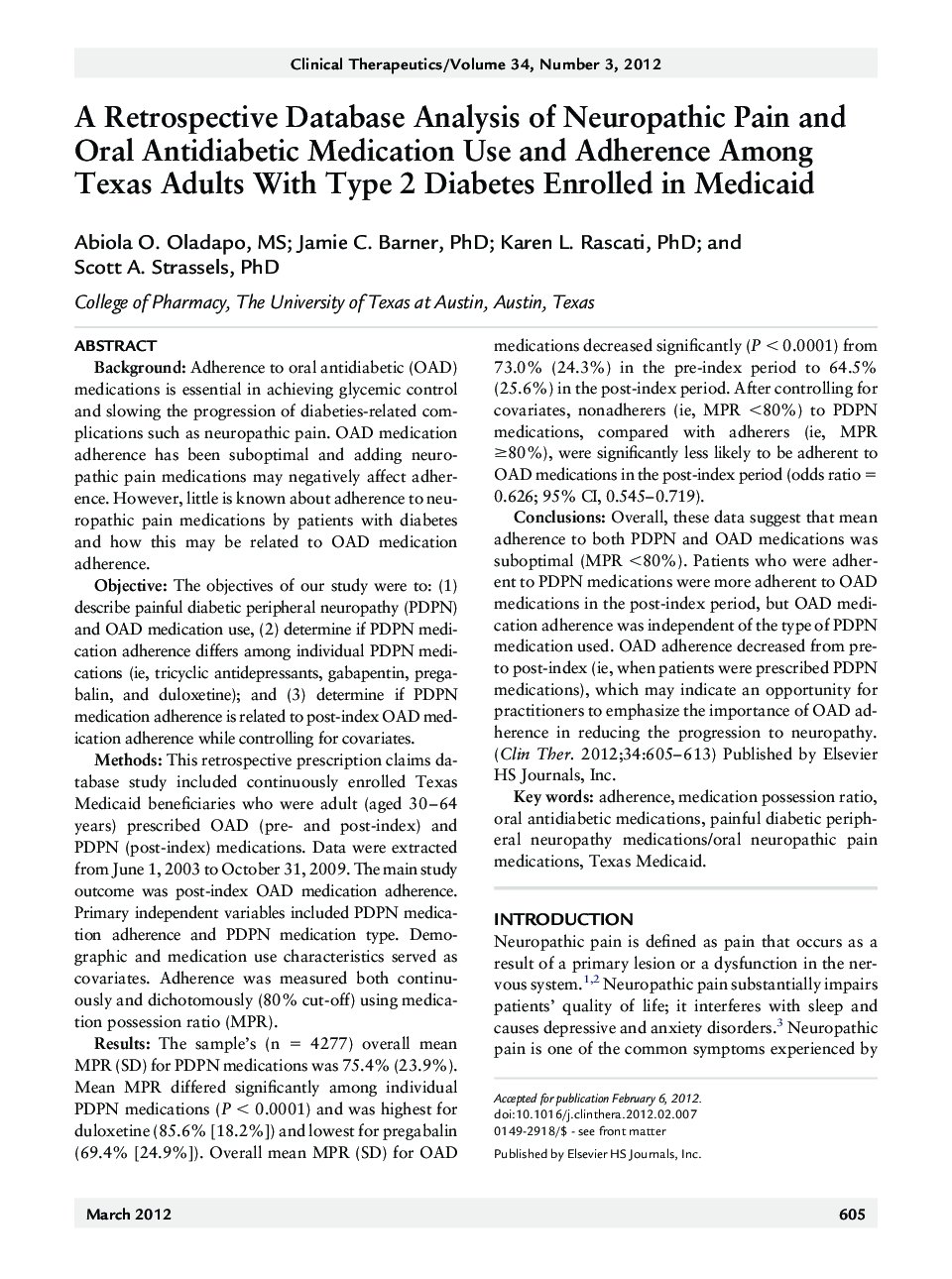| Article ID | Journal | Published Year | Pages | File Type |
|---|---|---|---|---|
| 2527312 | Clinical Therapeutics | 2012 | 9 Pages |
BackgroundAdherence to oral antidiabetic (OAD) medications is essential in achieving glycemic control and slowing the progression of diabeties-related complications such as neuropathic pain. OAD medication adherence has been suboptimal and adding neuropathic pain medications may negatively affect adherence. However, little is known about adherence to neuropathic pain medications by patients with diabetes and how this may be related to OAD medication adherence.ObjectiveThe objectives of our study were to: (1) describe painful diabetic peripheral neuropathy (PDPN) and OAD medication use, (2) determine if PDPN medication adherence differs among individual PDPN medications (ie, tricyclic antidepressants, gabapentin, pregabalin, and duloxetine); and (3) determine if PDPN medication adherence is related to post-index OAD medication adherence while controlling for covariates.MethodsThis retrospective prescription claims database study included continuously enrolled Texas Medicaid beneficiaries who were adult (aged 30–64 years) prescribed OAD (pre- and post-index) and PDPN (post-index) medications. Data were extracted from June 1, 2003 to October 31, 2009. The main study outcome was post-index OAD medication adherence. Primary independent variables included PDPN medication adherence and PDPN medication type. Demographic and medication use characteristics served as covariates. Adherence was measured both continuously and dichotomously (80% cut-off) using medication possession ratio (MPR).ResultsThe sample's (n = 4277) overall mean MPR (SD) for PDPN medications was 75.4% (23.9%). Mean MPR differed significantly among individual PDPN medications (P < 0.0001) and was highest for duloxetine (85.6% [18.2%]) and lowest for pregabalin (69.4% [24.9%]). Overall mean MPR (SD) for OAD medications decreased significantly (P < 0.0001) from 73.0% (24.3%) in the pre-index period to 64.5% (25.6%) in the post-index period. After controlling for covariates, nonadherers (ie, MPR <80%) to PDPN medications, compared with adherers (ie, MPR ≥80%), were significantly less likely to be adherent to OAD medications in the post-index period (odds ratio = 0.626; 95% CI, 0.545–0.719).ConclusionsOverall, these data suggest that mean adherence to both PDPN and OAD medications was suboptimal (MPR <80%). Patients who were adherent to PDPN medications were more adherent to OAD medications in the post-index period, but OAD medication adherence was independent of the type of PDPN medication used. OAD adherence decreased from pre- to post-index (ie, when patients were prescribed PDPN medications), which may indicate an opportunity for practitioners to emphasize the importance of OAD adherence in reducing the progression to neuropathy.
